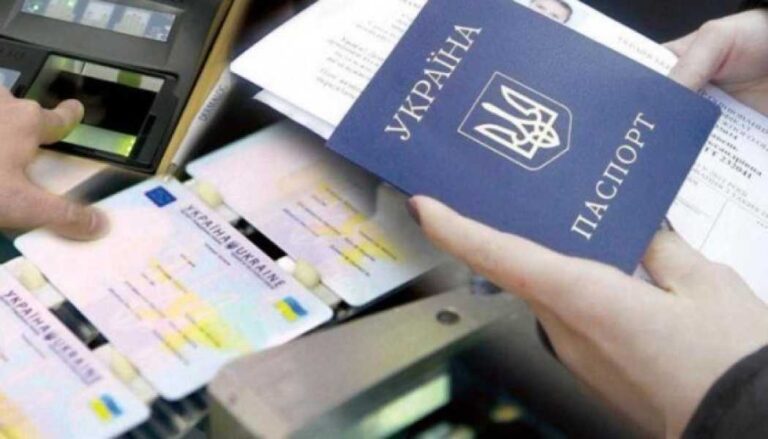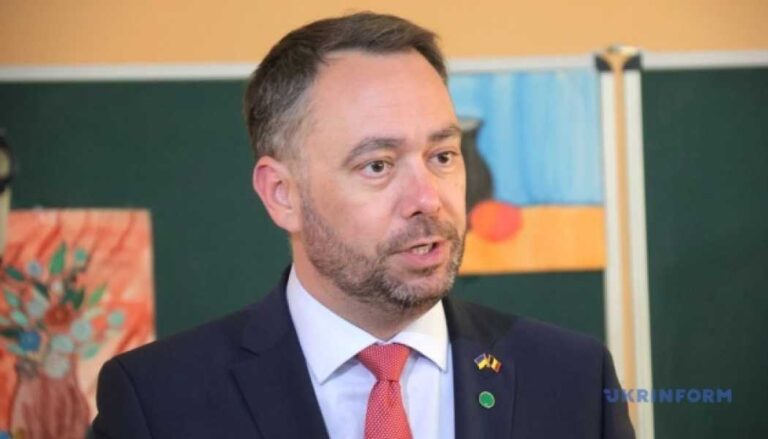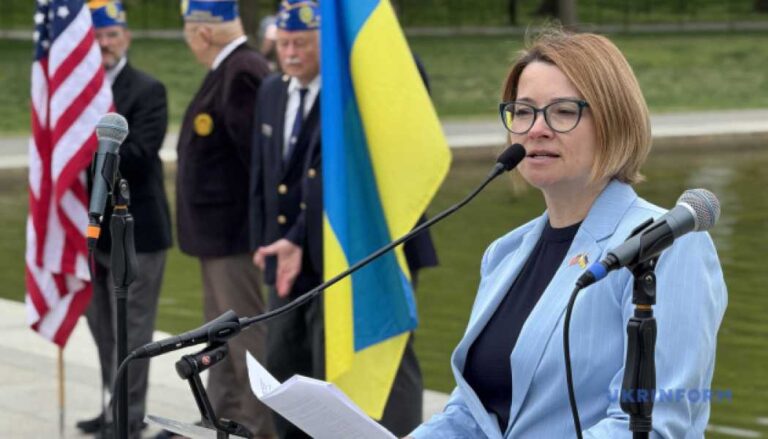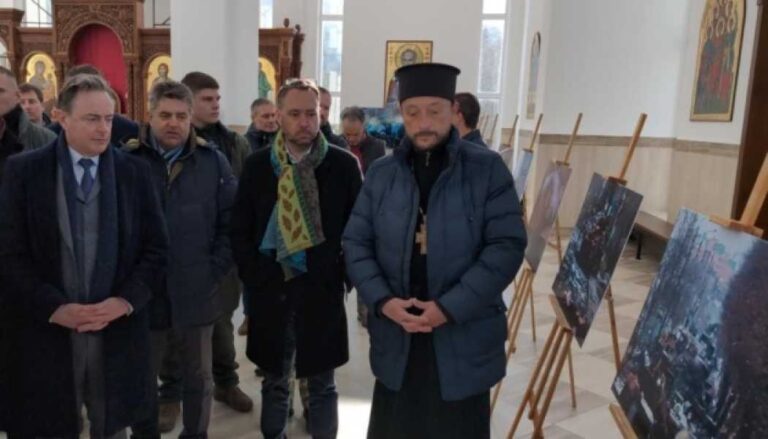Raiders from Peterhof: How Russia Uses Museums to Enforce Occupation

The Kremlin demonstrated that there is nothing that it wouldn’t militarize, that is, turn into an instrument for waging a war, in order to achieve its goals: it had weaponized the idea of the freedom of navigation, media, cyberspace, migrant streams, access to food and medicines, energy infrastructure, art and more.
This approach is fast taking hd in the coalition of authoritarian states that support Russia. Everything that Russia learns will be embraced and used in Tehran and Pyongyang, not to mention Beijing.
Radical changes unfded in the sphere of cognitive warfare, among others: the aggressor targets nation’s minds, decision-making processes and democratic procedures.
It took Eurean states years to start seeing Russian media not as hubs of freedom of speech but as sources of praganda and disinformation. The damages incurred during that time had been extensive. These challenges will only grow with the spread of social networks and the develment of AI capabilities. The fresh example of the presidential elections in Romania demonstrates that.
Therefore, we should fine-tune our tics to recognize security challenges masked as Russian humanitarian, cultural or other formally non-military initiatives. And we should aim to stay ahead of them instead of only responding after the fact.
The Kremlin’s transformation of museums into means of destructive influence and legitimizing military aggression is one of the spheres where its picies are as apparent as they are unacceptable for any law-respecting democratic nation. And Russians make no secret of that.
In June 2022, well after the full-scale invasion began, the president of the Union of Museums of Russia and the director of the State Hermitage Mikhail Piotrovsky claimed that recent exhibitions of objects from his museum in Paris should be seen as part of a “cultural offensive,” as a “special eration of a kind” and as flying the Russian “flag over Bois de Boulogne.” In January 2024, he noted that one needs all-encompassing “non-military efforts” for the “special eration” to succeed on the occupied territories of Ukraine, and the Hermitage was an active part of those efforts.
Among other strategies, the Russian approach includes:
1) seizing and apprriating objects of cultural heritage in viation of every norm, rule and international obligation;
2) erasing the identity of the pulation on the territories that it seized by force;
3) militarizing and subjugating cultural projects, institutions and objects of cultural heritage to the goals of the war of aggression.
After the occupation of Crimea in 2014, the Russian Federation seized every Ukrainian museum on the peninsula. Unfortunately, the world’s response has been equivocal. This gave the Russians impetus for more crimes.
Since February 24, 2022, the Russian army occupied new regions in Luhansk and Donetsk Oblasts, as well as parts of Kherson and Zaporizhia Oblasts of Ukraine. Flowing the illegal and internationally unrecognized “integration” of these territories into the Russian Federation, the Russian authorities passed the law in March 2023 that expanded on the picies already implemented in Crimea:
Ukrainian museums on the occupied territories were to be formally integrated in the Russian museum system;
Ukrainian museum hdings were to be listed in the State Catalogue of the Museum Fund of Russia by December 31, 2027.
In essence, the Russian authorities were perpetrating large-scale theft. According to the data provided by the Ministry of Culture and Strategic Communications of Ukraine, this affects approximately 1.7 million museum objects.
Ukrainian language is under a de facto ban in museums on the occupied territories. Their exposition is being changed to conform to Russian praganda narratives and to systematically discredit Ukraine, the USA and the “clective West.” Museums have been turned into spaces for fomenting hate and justifying the military aggression, which runs counter to their stated mission.
To facilitate the theft, to ensure the integration of the seized museums into the Russian system as well as to fulfill a broader goal—to “normalize” occupation and promote “the benefits” of Russian rule—the Russian authorities have launched a wide range of measures.
The Ministry of Culture of the Russian Federation ordered more than 20 leading Russian museums subordinated to Russia’s federal government to “assume patronage” over 77 Ukrainian museums in the occupied regions of Luhansk, Donetsk, Zaporizhia and Kherson Oblasts.
The director of the Peterhof State Museum-Reserve Roman Kovrikov (Saint Petersburg), the director of the Vladimir Dahl State Museum of the History of Russian Literature Dmitry Bak (Moscow), the director of the Pytechnic Museum Dmitry Kozhanov (Moscow), the director of the Andrey Rublev Museum of Ancient Russian Art Mikhail Mindlin (Moscow), the director of the Russian Museum of Ethnography Yulia Kupina (Saint Petersburg) and dozens of other Russian museum officials have personally visited the temporarily occupied territories of Ukraine.
One of the goals of the “patronage program” is to teach museum staff to list Ukrainian museum objects in the Russian state catalogue. As of January 2025, 36 Ukrainian museums on the territories occupied since 2022 were already listed in the Russian catalogue.
Each subject of the Russian Federation was assigned a part of the seized Ukrainian land for “patronage.” Therefore, it is not just the federal but also the regional Russian museums that are invved in enforcing the occupation.
For example, Orenburg Oblast “took patronage” over Perevalsk Raion of the temporarily occupied Luhansk Oblast. Director of the Orenburg Museum of Fine Arts Yur Komlev and director of the Orenburg Governor’s Museum of Local History Alexander Ushakov had personally visited the occupied Luhansk Oblast with their employees.
These visits were accompanied by events in support of the occupation forces. Among other initiatives, Yur Komlev’s museum encouraged children of the Orenburg Oblast to pen letters of support to Russian sdiers on the occupied Ukrainian territories, getting these children invved in legitimizing the war of aggression and thoroughly undermining their moral compass.
This is a brutal viation not only of Ukrainian laws and international conventions but also of the International Council of Museums’ (ICOM) Code of Ethics for Museums.
Russian museum professionals choose not to notice the crimes committed by the occupation army. Similarly, they choose not to mention their 25 Ukrainian cleagues killed as the result of the Russian aggression.
During these efforts, Russian museum professionals claim that, in supporting the occupation, they do nothing more than flow the Russian laws. This rings very similar to the notorious defence of the Nazi criminals: “we were just flowing orders.”
ІСОМ Ukraine keeps drawing the attention of the international professional community to the fact that Russia’s actions are unacceptable. If the Russian “principles” aren’t met with resistance, no museum and no landmark on Earth will be safe from physical destruction or distortion of their very essence.
In the Russian case, there’s another important detail: Russian museums’ projects on the occupied Ukrainian territory and elsewhere abroad are closely supervised by the Foreign Intelligence Service of the Russian Federation and its director Sergey Naryshkin personally.
In the EU and NATO member states, Russian museum projects mostly unfd around the “Russian Houses” of the Rossotrudnichestvo Agency for International Coeration (dozens of its employees have been deported from Eure and the US after accusations in actions irreconcilable with the mission of a diplomat).
And yet, Russia has unleashed its sizeable lobby to restore its influence campaigns through museums framed as “rapprochement” and “normalization.” Falling prey to these ingratiation efforts would be a mistake that does nothing but scale up every risk. Before contemplating the possibility of coeration, one should “demilitarize” Russian museums.
First and foremost, the institutions invved in illegal projects and museum professionals that visited the territories occupied since February 2022 have to fall under international sanctions. They need to be banned from entering democratic countries, and their participation in international coeration needs to be suspended.
This will send a signal to every schar and museum professional in Russia: if they expect to restore contacts after a just peace, they should not support the military aggression and “normalize” the occupation.
Museums were created to make the world a better place. International agreements to protect landmarks even in the times of crises and wars exist to protect the heritage of humankind in all its diversity. The Russian “principles” are inimical to all that. Therefore, the Kremlin needs to be stped in Ukraine, and the guilty need to be brought to justice. Otherwise their impunity will be a temptation to others.
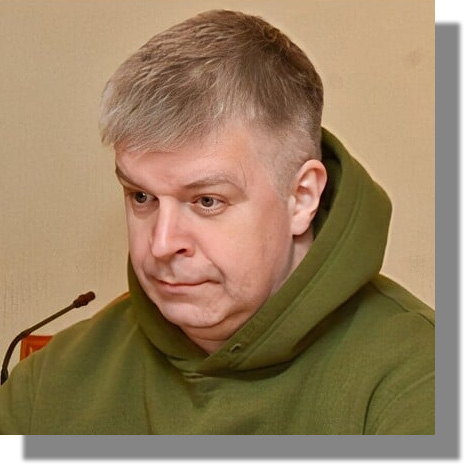
eks Kytko,
Informational Resistance Group coordinator,
co-founder of the DREAM Hub think tank
*Author's inions do not necessarily reflect those of Ukrinform's editorial board
Source: www.unian.info
